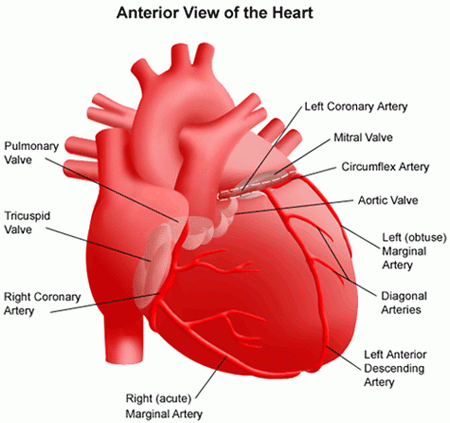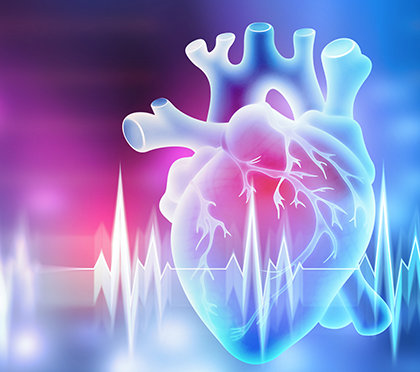Comprehending the Relevance of Cardiology in Modern Medical Care Solutions
Cardiology plays a critical duty in modern medical care, especially as heart problem remains to be the leading reason for mortality worldwide. Advances in diagnostics and treatment have transformed individual treatment, allowing earlier treatments and improved results. The change towards precautionary cardiology encourages people to handle their health and wellness proactively. As modern technology continues to advance, the assimilation of ingenious services might additionally redefine cardiology's impact on public wellness, prompting a more detailed assessment of emerging patterns and their ramifications.
The Occurrence of Heart Illness and Its Influence On Public Wellness
Heart illness remains the leading reason of death worldwide, its impact expands much past individual people to influence public health and wellness systems and economies. The high occurrence of heart problem puts a substantial pressure on healthcare sources, demanding raised funding for treatment, recovery, and avoidance programs. Public health and wellness campaigns need to attend to danger elements such as obesity, smoking cigarettes, and sedentary lifestyles, which add greatly to the rising incidence of heart conditions.Moreover, the economic concern connected with cardiovascular disease is tremendous, incorporating not just direct medical expenses but additionally indirect costs associated to lost performance and early mortality. Neighborhoods face obstacles in taking care of these costs, frequently resulting in differences in medical care access and outcomes. As the populace ages and lifestyle-related risks remain to intensify, the necessity for efficient cardiology interventions comes to be critical. As a result, addressing heart condition is not only an issue of individual health and wellness however also a critical public wellness priority.
Breakthroughs in Heart Diagnostics and Imaging Techniques
Current developments in cardiac diagnostics and imaging techniques have actually reinvented the field of cardiology, enhancing the capacity to detect and monitor heart conditions. Methods such as heart MRI, CT angiography, and echocardiography have actually become increasingly advanced, offering comprehensive photos of heart frameworks and functions. These modalities permit for the very early identification of conditions like coronary artery illness, cardiac arrest, and valvular disorders.Moreover, advancements in non-invasive diagnostics, such as wearable innovation and remote tracking tools, have equipped people and healthcare companies. These tools facilitate real-time monitoring of heart rhythms and various other crucial indicators, causing prompt interventions. Additionally, fabricated knowledge is being integrated into imaging analysis, boosting precision and effectiveness in diagnosis.
Innovations in Therapy Alternatives for Heart Issues
Recent improvements in cardiology have actually caused considerable developments in treatment options for heart disease. These include sophisticated surgical techniques that enhance procedural outcomes and arising drugs that provide brand-new methods for treatment. As the field develops, these technologies play an important function in enhancing individual treatment and outcomes.
Advanced Surgical Techniques
Technologies in medical strategies have actually changed the landscape of cardiology, supplying brand-new wish for individuals with heart disease. Minimally invasive treatments, such as catheter-based treatments, have actually substantially minimized healing times and hospital stays. Methods like robotic-assisted surgical treatment improve accuracy, enabling doctors to browse intricate physiological frameworks with higher accuracy. Additionally, innovations in imaging modern technology assist in real-time visualization throughout procedures, enhancing outcomes. Transcatheter aortic shutoff replacement (TAVR) exemplifies a development in treating aortic stenosis, making it possible for valve substitute without open-heart surgical treatment. In addition, hybrid strategies that integrate catheter-based and surgical approaches give tailored solutions for numerous heart issues. These innovative medical strategies not just enhance patient security yet likewise increase treatment options, highlighting the important role of development in modern cardiology techniques.
Emerging Drugs and Treatments
As the landscape of cardiology remains to progress, emerging therapies and medications play a pivotal duty in improving therapy choices for heart conditions. Advancements such as novel anticoagulants and advanced lipid-lowering agents have transformed the management of heart diseases, significantly minimizing individual morbidity and mortality. In addition, the growth of genetics treatments and regenerative medication supplies encouraging methods for treating conditions previously deemed irreversible. Professional trials are continuously disclosing the efficacy of these treatments, pressing the limits of standard therapies. In addition, the combination of electronic health and wellness modern technologies facilitates personalized medicine, permitting customized therapy strategies based upon hereditary and way of life factors. Collectively, these innovations emphasize the dynamic nature of cardiology, improving individual outcomes and redefining requirements of care in modern healthcare.
The Function of Preventive Cardiology in Client Care
Precautionary cardiology plays an essential function in patient care by concentrating on the identification of danger factors that add to cardiovascular disease. With lifestyle alteration strategies and early discovery techniques, medical care companies can efficiently minimize the occurrence of cardio events - Cardiology. This proactive method not only improves individual end results however likewise promotes long-lasting health
Threat Element Recognition
While cardiovascular diseases continue to be a leading reason for morbidity and death worldwide, efficient risk aspect identification functions as a foundation of preventative cardiology. Identifying threat elements such as hypertension, household, diabetes, and hyperlipidemia history is crucial for early treatment. Medical care professionals make use of various screening techniques to evaluate these elements, enabling tailored preventative steps. Furthermore, comprehending a patient's way of living choices, such as smoking cigarettes and physical inactivity, additionally informs risk evaluations. This detailed analysis allows medical professionals to create personalized look at this website care plans aimed at mitigating risks. By focusing on danger variable identification, health care systems can enhance client end results and lower the total problem of cardio conditions, inevitably adding to improved public health and wellness techniques and resource allotment.
Way Of Life Alteration Techniques
A plethora of studies highlights the critical duty of way of living alteration approaches in reducing cardio condition risk. These techniques encompass nutritional changes, increased physical task, smoking cigarettes cessation, and weight monitoring. By adopting a heart-healthy diet plan rich in fruits, veggies, entire grains, and lean healthy proteins, people can reduce cholesterol levels and high blood pressure. Routine exercise reinforces the heart and improves general cardio health. Furthermore, quitting smoking greatly minimizes the risk of cardiovascular disease and improves recovery prices for those with status quo. Weight administration additionally adds to cardio wellness by minimizing other threat variables such as diabetes mellitus and high blood pressure. Applying these lifestyle transforms not just promotes individual health but also acts as a cornerstone of preventative cardiology in individual care.
Very Early Detection Strategies
Way of life modifications significantly add to minimizing cardiovascular illness risks, however they are most effective when coupled with very early detection strategies. Precautionary cardiology stresses the relevance of identifying potential heart issues prior to they escalate right into severe problems. Methods such as high blood pressure tracking, cholesterol screening, and progressed imaging innovations like echocardiograms play important duties in reviewing cardiovascular wellness. Biomarkers and genetic testing additionally improve the accuracy of early detection, enabling customized precautionary approaches. Regular cardiac risk assessments empower doctor to interfere proactively, possibly avoiding cardiac arrest and strokes (Dr Garcia). By integrating these very early discovery approaches into regular treatment, clients can benefit from timely way of life interventions and targeted treatments, inevitably improving end results and boosting high quality of life
Integrating Modern Technology Into Cardiology Practices
As improvements in technology remain to reshape various areas, the combination of ingenious devices and systems into cardiology practices has ended up being important for boosting individual treatment and end results. Telemedicine systems permit cardiologists to keep track of clients from another location, improving accessibility to care while minimizing the problem on health care facilities. Wearable tools, such as smartwatches, enable continual heart rate surveillance, informing both clients and physicians to potential issues in real-time. Furthermore, synthetic intelligence (AI) is being made use of to assess vast quantities check my reference of cardiac information, assisting in early medical diagnosis and customized therapy strategies. Advanced imaging methods, consisting of 3D echocardiography, enhance visualization of heart structures, resulting in much more specific treatments. Digital wellness documents (EHRs) enhance client info monitoring, guaranteeing that cardiologists have prompt access to crucial information. Together, these technological developments are transforming cardiology, advertising aggressive administration and improved health outcomes for people with cardio conditions.
The Importance of Client Education And Learning and Involvement
Person education and learning and engagement play a pivotal role about his in the administration of cardiovascular health and wellness. By outfitting patients with knowledge regarding their conditions, treatment options, and lifestyle changes, healthcare service providers equip people to take an energetic role in their care. This positive method can lead to boosted adherence to recommended medications, nutritional modifications, and exercise regimens, eventually minimizing the danger of complications.Engagement additionally promotes a strong patient-provider partnership, encouraging open interaction and trust fund. When patients feel informed and included, they are more probable to voice worries and ask questions, which can lead to far better scientific results. Additionally, academic resources, such as workshops or electronic systems, can enhance understanding and advertise self-management techniques. Generally, focusing on person education and interaction is important for boosting cardiovascular health and wellness, boosting lifestyle, and minimizing medical care expenses related to heart diseases.
Future Fads in Cardiology and Their Potential Impact

Often Asked Inquiries
What Way Of Life Changes Can Reduce Heart Illness Risk?
The current concern addresses way of life modifications that can greatly minimize heart disease risk. Cardiology Jupiter. Embracing a balanced diet plan, involving in regular exercise, preserving a healthy weight, handling stress and anxiety, and preventing cigarette can notably enhance cardio wellness
How Can I Identify Early Indicators of Heart Problems?
Recognizing early indications of heart troubles involves tracking symptoms such as chest pain, shortness of breath, tiredness, and irregular heartbeat. Prompt recognition of these signs can motivate needed medical assessment and intervention for far better end results.
What Are the Distinctions In Between Cardiologists and Cardiac Surgeons?
The distinctions between cardiologists and cardiac doctors lie in their roles; cardiologists mostly take care of and identify heart conditions via non-invasive methods, while heart cosmetic surgeons do operations to deal with structural heart problems. Each plays an important, distinctive role.

Exactly how Frequently Should I Get My Heart Wellness Checked?
The frequency of heart medical examination differs based on specific threat factors. Usually, adults must undergo analyses each to 2 years, while those with existing problems may need more frequent assessments as recommended by medical care specialists.
What Role Does Genes Play in Heart Problem Threat?
Genetics greatly affects cardiovascular disease risk, with domestic patterns indicating acquired problems. Details genes can incline people to hypertension, cholesterol problems, and other cardio issues, highlighting the significance of genetic testing in reviewing heart health. Heart disease continues to be the leading cause of fatality worldwide, its effect prolongs much beyond private clients to affect public health systems and economies. Public wellness efforts need to resolve threat aspects such as excessive weight, smoking cigarettes, and inactive lifestyles, which contribute substantially to the increasing incidence of heart conditions.Moreover, the financial concern connected with heart illness is enormous, encompassing not just direct clinical prices but also indirect expenditures connected to shed efficiency and premature death. Preventive cardiology plays a vital function in client care by concentrating on the recognition of risk elements that add to heart disease. Fabricated intelligence (AI) and maker understanding are enhancing diagnostics and individual tracking, making it possible for very early detection of heart illness. The differences between cardiologists and cardiac cosmetic surgeons exist in their roles; cardiologists primarily identify and take care of heart conditions via non-invasive methods, while cardiac doctors execute medical treatments to deal with structural heart issues.